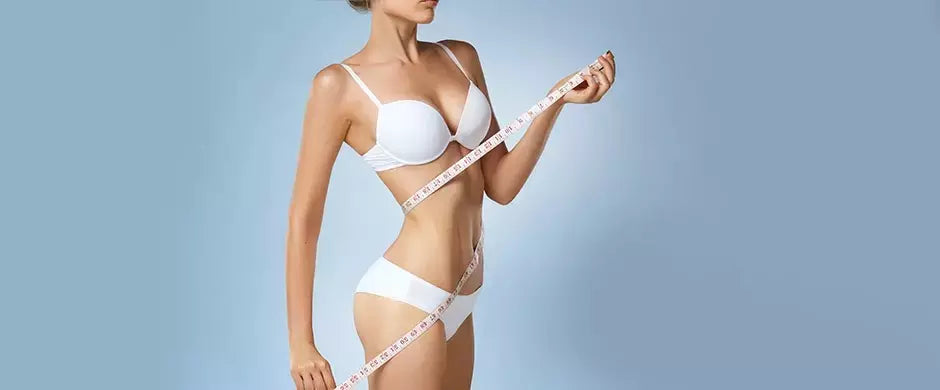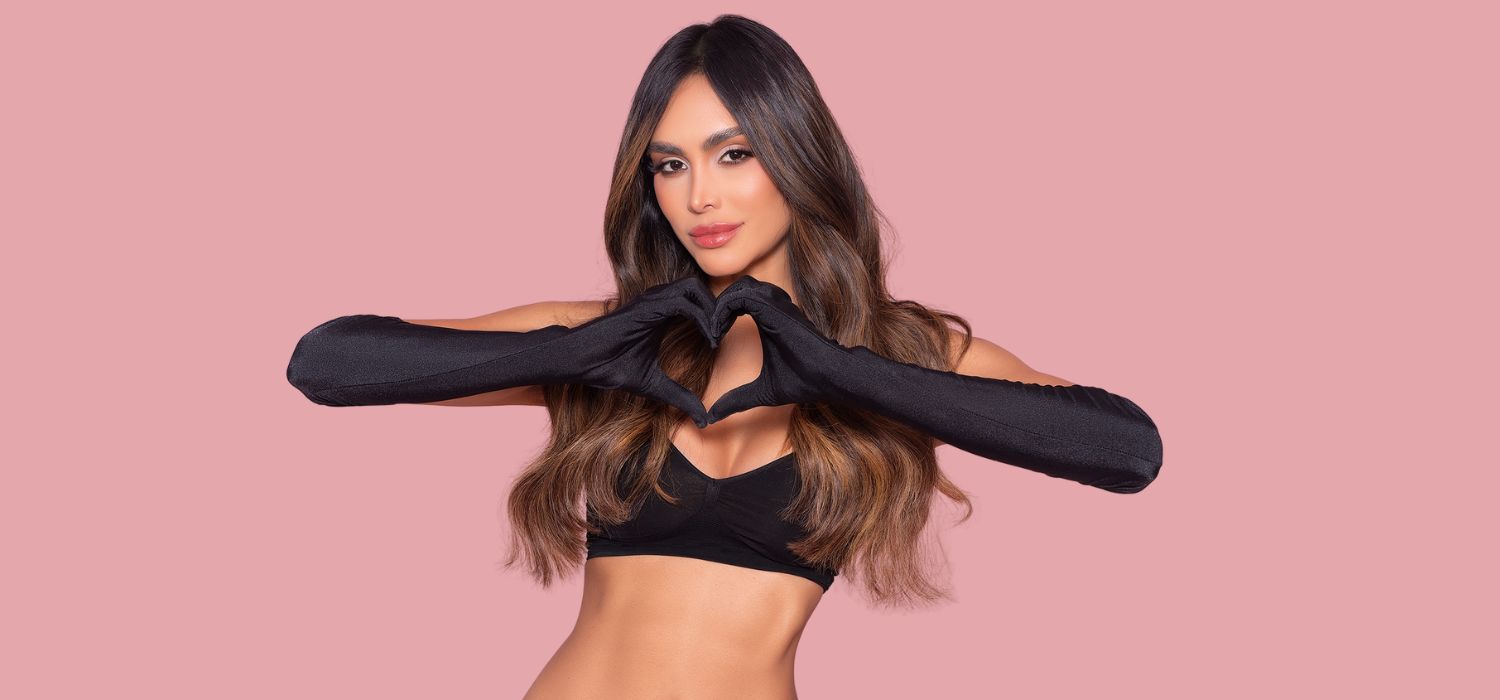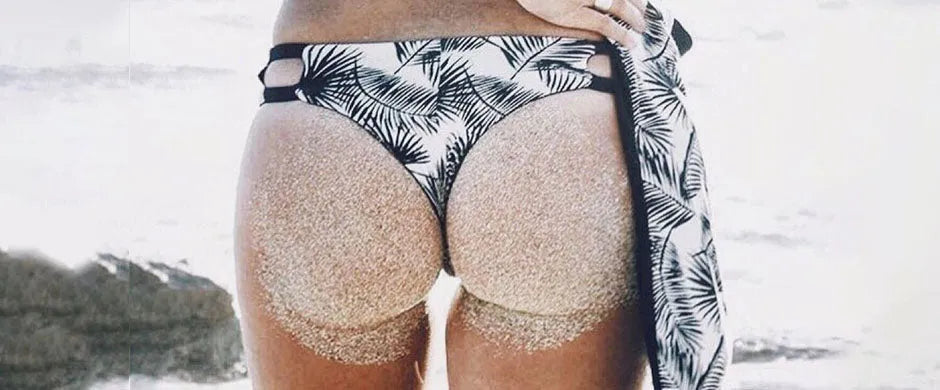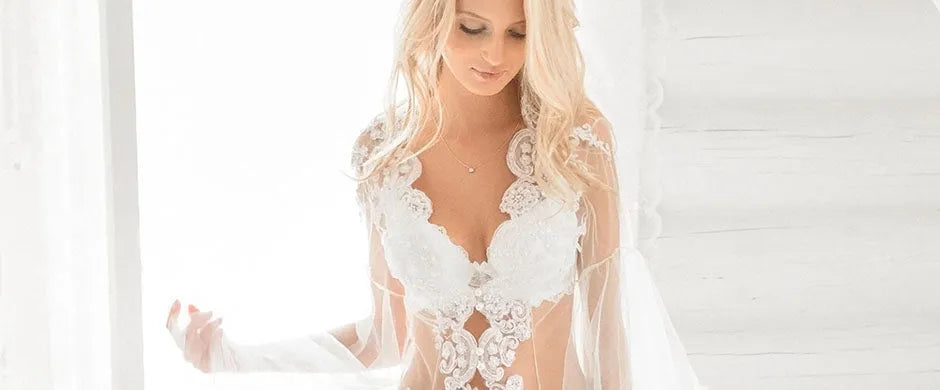Knowing your bra size should be a reflex before every purchase. Yet, this simple action is neglected by most of us.
Nearly 80% of women wear the wrong bra size daily. An alarming figure when you consider the impact on comfort and health.
Your body naturally evolves over time: weight fluctuations, pregnancy, menopause, or simply natural aging modify your figure. Taking your measurements before each online purchase isn't a luxury—it's a necessity.
Discover our complete guide: precise measurements, size charts, and tips to detect an ill-fitting size. Take the test now!
Table of contents
- 1 How do I know my bra size?
- 1.1 Measuring your band size
- 1.2 Determining your cup depth
- 2 Is my bra the right size?
- 2.1 Breasts spilling over the cups
- 2.2 Uncomfortable underwires
- 2.3 Marks appearing on my skin
- 3 Enhancing your cleavage with proper fit
- 3.1 Adapting structure to your body
How do I know my bra size?
Determining your bra size relies on two essential measurements: the band size which corresponds to your bust circumference, and the cup depth which defines your breast volume.
These two combined data give you your complete size (example: 34C or 36D). Take time to measure correctly, as an error of just an inch or two can lead to wearing a completely unsuitable size.

Measuring your band size
This first measurement forms the foundation of your sizing. It determines the number that precedes the cup letter (the 34 in 34B, for example).
Optimal measuring conditions: Choose a quiet moment when you can focus. Undressed and standing, hold yourself naturally upright without excessively arching your back or slouching.
Steps to follow:
- Place the measuring tape just under your breasts, where your bra band normally sits
- Check that the tape remains horizontal all around your torso, without riding up in the back
- Adjust the tension: the tape should conform to your body without compressing it. You should be able to breathe comfortably and slide a finger underneath
- Take the measurement in inches during natural exhalation
- Note this number carefully
Practical tip: No measuring tape? Use string or non-elastic ribbon that you can measure afterward with a regular ruler or yardstick.
| Your measurement | Size to choose |
|---|---|
| 25 - 26 in | 30 |
| 27 - 28 in | 32 |
| 29 - 30 in | 34 |
| 31 - 32 in | 36 |
| 33 - 34 in | 38 |
| 35 - 36 in | 40 |
| 37 - 38 in | 42 |
Determining your cup depth
This second measurement defines your breast volume and therefore the letter of your size (A, B, C, D, etc.). It requires the same precision as the first.
Measuring technique:
- Position the measuring tape flat across the fullest part of your bust, typically at nipple level
- Pass the tape under your arms and over your shoulder blades to form a complete loop
- The tape should simply rest on your breasts without flattening or compressing them
- Keep breathing naturally and record the measurement in inches
- Note this second number
The crucial calculation: Subtract your first number (band size) from this second number (bust measurement). The result corresponds to your cup depth.
Concrete example: You measured 30 inches under the bust and 35 inches across the bust. The calculation 35 - 30 = 5 inches. Your 5-inch difference corresponds to a DD cup. Your complete size is therefore 30DD.
Find your cup in the chart below. Don't forget to check each brand's specific size guide, as correspondences may vary slightly.
| Your result | Cup to choose |
|---|---|
| Less than 1 in | AA Cup |
| 1 in | A Cup |
| 2 in | B Cup |
| 3 in | C Cup |
| 4 in | D Cup |
| 5 in | DD/E Cup |
| 6 in | DDD/F Cup |
| 7 in | G Cup |
| 8 in | H Cup |
Is my bra the right size?
Before tossing all your current bras, let's learn to identify which ones truly deserve to stay in your drawer. A correctly sized bra becomes invisible. You should never have to constantly readjust it or feel discomfort.
Conversely, if you spend your day repositioning it, tugging on straps, or relieving pressure on your ribs, it's time to replace it without regret.
The lingerie market offers every price range. Faced with this diversity, you'll certainly find what suits you. And contrary to popular belief, the most expensive isn't automatically the best fit.
Our customers regularly encounter these issues. Here are the telltale signs of an unsuitable size:
Breasts spilling over the cups
Your cups are too small! Your breasts are compressed into cups that don't correspond to their actual volume. This "double boob" effect is neither flattering nor comfortable.
The good news: You've likely gone up a cup size since purchasing this bra. Hormonal variations, weight gain, or simply natural body evolution can explain this change.
If you intentionally chose a smaller size to create more cleavage volume, opt instead for a well-fitted push-up. It will create the desired effect without mistreating your breasts or compressing your ribcage.
Uncomfortable underwires
Underwires that bother you reveal two possible problems: natural bra wear or an unsuitable size from the start.
Over time, repeated washing and normal wear can cause underwires to deform or dislodge from their casing. They then ride up at the bust center or shift to the sides, creating painful pressure points.
Correct positioning: Underwires should follow the natural crease under your breast and remain flat against your ribcage. If they ride up onto the breast tissue itself, the cup is too small. If they float or shift away, the band is too large.
In any case, a bra whose underwires hurt you must be replaced. Your wellbeing is non-negotiable.
Marks appearing on my skin
Red marks that persist several minutes after removing your bra signal an unsuitable band size, typically too tight.
If you were already wearing this bra on the loosest hook and it leaves marks, abandon it immediately. Not only is it becoming harmful to your body, but it's no longer properly fulfilling its support role.
A too-tight band compresses your ribcage and restricts your breathing. Skin tends to bulge over it, creating unsightly and deeply uncomfortable rolls, even under loose clothing.
The simple test: You should be able to slide two fingers under the back band without forcing. If it's impossible to fit even one finger, the band is definitely too small.

Enhancing your cleavage with proper fit
Showcasing your cleavage daily rests on two pillars: choosing the right size and knowing how to adjust it correctly. Whether you have fuller curves or a slimmer figure, these principles apply universally.
The importance of correctly positioning your bra, particularly during the first fitting, should never be neglected. Here are the golden rules to respect:
Essential adjustments
- Adjust your straps to your body: The distance between the top of your torso and the center of your breasts varies from woman to woman, even at identical sizes. This is the first adjustment to make when purchasing a new bra. Check this point every 3 to 4 weeks, as elastic naturally loosens.
- Check the center gore: The gore (the central piece between the cups) should be completely flat against your sternum. If it floats or pulls away from your body, the cup is too small or the band too large.
- Monitor the back position: The back band should form a horizontal line, ideally in line with the front underwires. It should never ride up toward your shoulder blades. If this happens, tighten at the hooks or change sizes.
- Position underwires correctly: As mentioned earlier, each underwire should follow the natural crease under the breast and remain flat against the skin, never riding up onto breast tissue.
Adapting structure to your body
Each type of bra responds to specific needs depending on your outfit, body type, and desired effect. Understanding these nuances allows you to always make the right choice.
For pronounced V-necklines
Under a fitted top or plunging dress, the push-up bra remains the undisputed champion. Its structure brings breasts together and lifts them toward the center, creating that sought-after harmonious cleavage. Choose it in your exact size for a natural and comfortable result.
For strapless and backless outfits
Strapless or backless dresses call for specific solutions. The bandeau bralette makes a smart choice if your bust doesn't require significant support. For more support, opt for an adhesive bra that smooths the silhouette while remaining invisible.
For flowing garments and blouses
Under lighter fabrics, prioritize comfort. A wireless style works perfectly if your body type allows. The balconette bra also represents an excellent option: it subtly lifts your shape without creating artificial volume, while remaining discreet under fine fabrics.
The golden rule: Always think practical! Your lingerie should adapt to your life, not the other way around. A well-stocked closet with several different styles allows you to always choose the perfect bra for every occasion.
 Sexy lingerie
Sexy lingerie Corsets & bustiers
Corsets & bustiers Sexy bodysuit
Sexy bodysuit Lingerie sets
Lingerie sets



Partager ce guide:
How to care for your lingerie to keep it beautiful longer?
Small bust bras: the guide to enhancing your curves